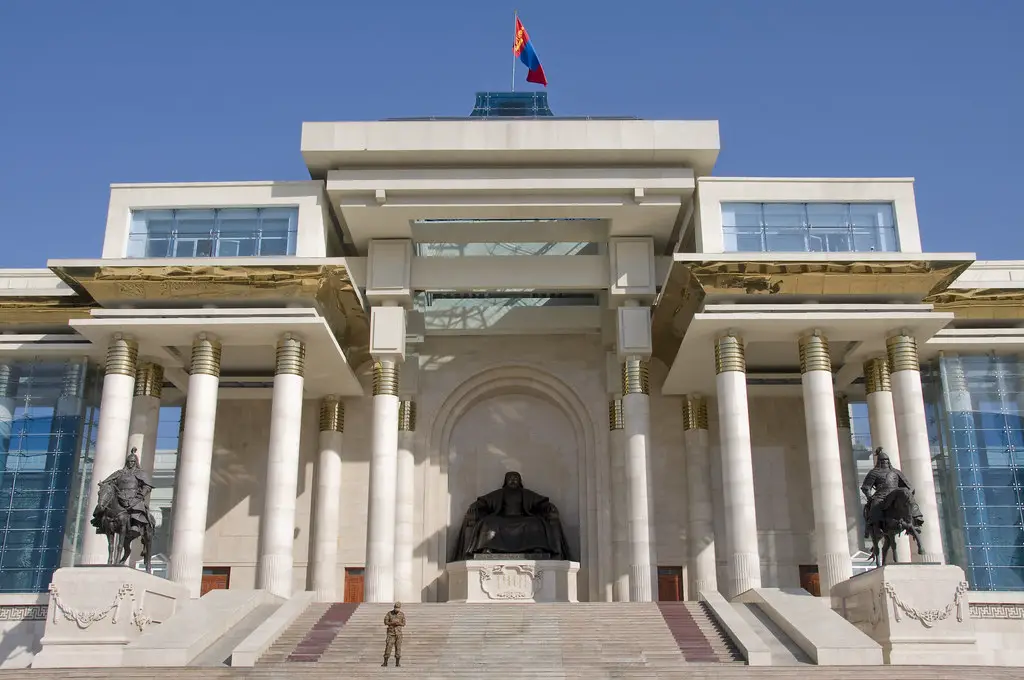💪 Support independent web, support us:
A complex located in Erdene Soum, Mongolia featuring the world’s tallest statue of Genghis Khan on horseback, surrounded by a tourist center, museum, and restaurants.
What to see or do: Admire the 131-foot bronze statue, walk around the base and learn about Mongolian history and culture at the museum, enjoy traditional Mongolian cuisine at the on-site restaurants, shop for souvenirs at the gift shop, and witness a stunning view of the surrounding countryside.
Don’t miss: The elevator ride to the top of the statue for a panoramic view of the area, the traditional Mongolian music and dance performances, and the opportunity to try on traditional Mongolian clothing for photos.
Insider travel tips: Visit early in the morning or late in the evening to avoid the crowds, and consider hiring a guide for a more in-depth understanding of the history and significance of the complex.
Be sure to bring comfortable shoes and dress in layers, as the weather can change quickly in the area.
2. Erdene Zuu Monastery
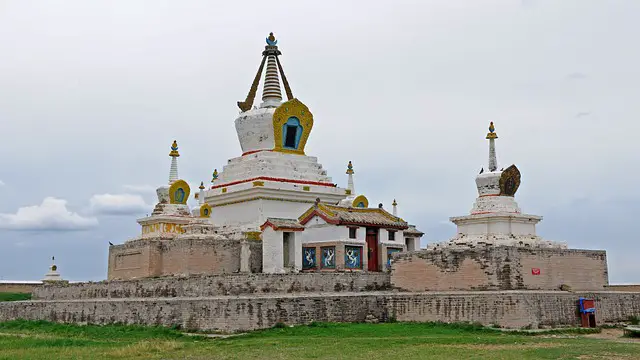
Erdene Zuu Monastery is a Buddhist temple complex located in Kharkhorin, Mongolia.
What to see or do: Marvel at the impressive architecture of the monastery that features a fusion of Tibetan, Chinese, and Mongolian styles. Explore the three main temples and the 108 stupas that surround the complex.
Admire the beautiful thangka paintings, Buddha statues, and other religious artifacts housed inside the temples.
Don’t miss: Don’t miss the opportunity to witness the daily prayers and rituals performed by the resident monks. Visit the nearby Kharkhorin Museum to learn more about the history and culture of the region.
Insider travel tips: – Dress modestly and remove your shoes before entering the temples.
3. Orkhon Valley Cultural Landscape
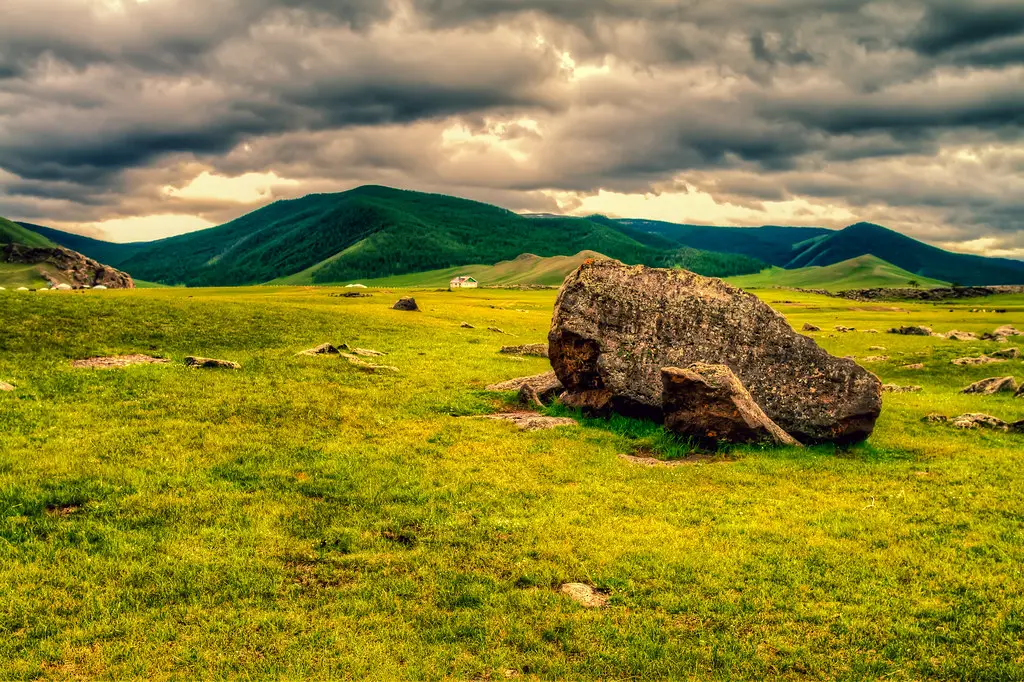
The Orkhon Valley Cultural Landscape is a UNESCO World Heritage Site located in central Mongolia. It covers an area of around 121,967 hectares and is home to numerous archaeological sites and monuments.
What to see or do: Explore the vast grassy meadows, rolling hills and deep river valleys along with the historic ruins of the ancient city of Karakorum.
Visit the Tuvkhun Monastery that lies on top of the hill at an altitude of 2,600 metres above sea level, providing stunning views of the Orkhon valley.
Visit the Kharkhorin Museum to see artefacts and insight about the history of Kharkhorin, as well as traditional Mongolian costumes and art pieces.
Don’t miss: Don’t miss the chance of camping in traditional Mongolian gers, where you can experience the local customs and hospitality. Don’t skip the opportunity to ride horses and visit nomadic families to learn about the whirling nomadic culture of Mongolia.
Insider travel tips: Carry adequate warm clothes as the temperature drops rapidly in the evening. It is essential to carry a good pair of walking shoes.
Try to hire a local guide who can explain and provide insight into the various artefacts found at the site. Visit during off-seasons to avoid the crowds and have a more authentic experience.
4. Terelj National Park
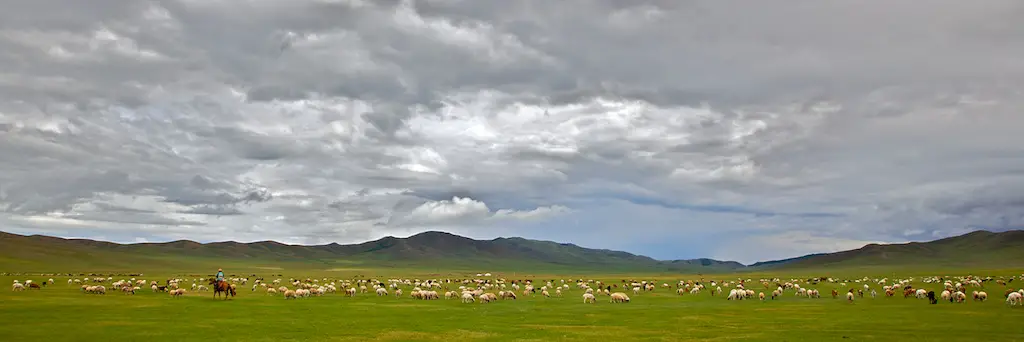
Terelj National Park is a stunningly beautiful national park located about 80km northeast of Mongolia’s capital city, Ulaanbaatar.
What to see or do: Visitors to Terelj National Park can enjoy a wide variety of outdoor activities, including hiking, horseback riding, and camping. The park is home to many interesting rock formations, including the famous Turtle Rock.
Wildlife enthusiasts will also enjoy the chance to spot moose, brown bears, and even snow leopards in the park’s rugged terrain.
Don’t miss: Visitors to Terelj National Park won’t want to miss the chance to explore the park’s Buddhist monastery, called Aryabal.
Insider travel tips: If you’re planning to camp in Terelj National Park, be sure to bring plenty of warm clothing, as the nights can be quite chilly.
And if you’re not sure where to start, consider hiring a local guide, who can help you navigate the park’s many hiking trails and make the most of your visit.
5. Hustai National Park
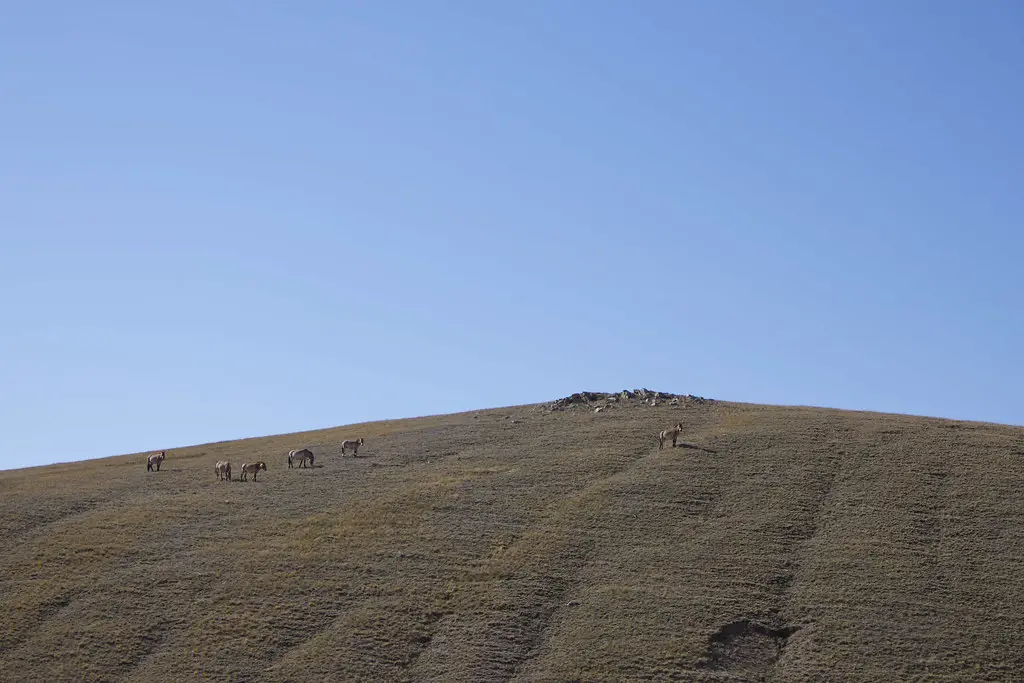
Hustai National Park is a protected area located about 100 km southwest of Ulaanbaatar, the capital of Mongolia. The park is a popular destination for eco-tourists interested in the protection and conservation of Mongolia’s native flora and fauna.
What to see or do: Visitors to Hustai National Park can witness the successful reintroduction of the endangered Przewalski’s horse, a species once thought to be extinct in the wild.
The park also features a variety of wildlife such as red deer, Eurasian lynx, and numerous bird species. Visitors can explore the park on guided tours, horseback riding, or on foot.
Don’t miss: Don’t miss the opportunity to see the Przewalski’s horses, and experience a traditional Mongolian ger camp stay.
Insider travel tips: Book a guided tour or a ger camp stay with local operators.
The best time to visit Hustai National Park is during spring and autumn, when the weather is mild and the wildlife is more active.
Be environmentally conscious and respect the park’s rules and regulations.
6. Amarbayasgalant Monastery
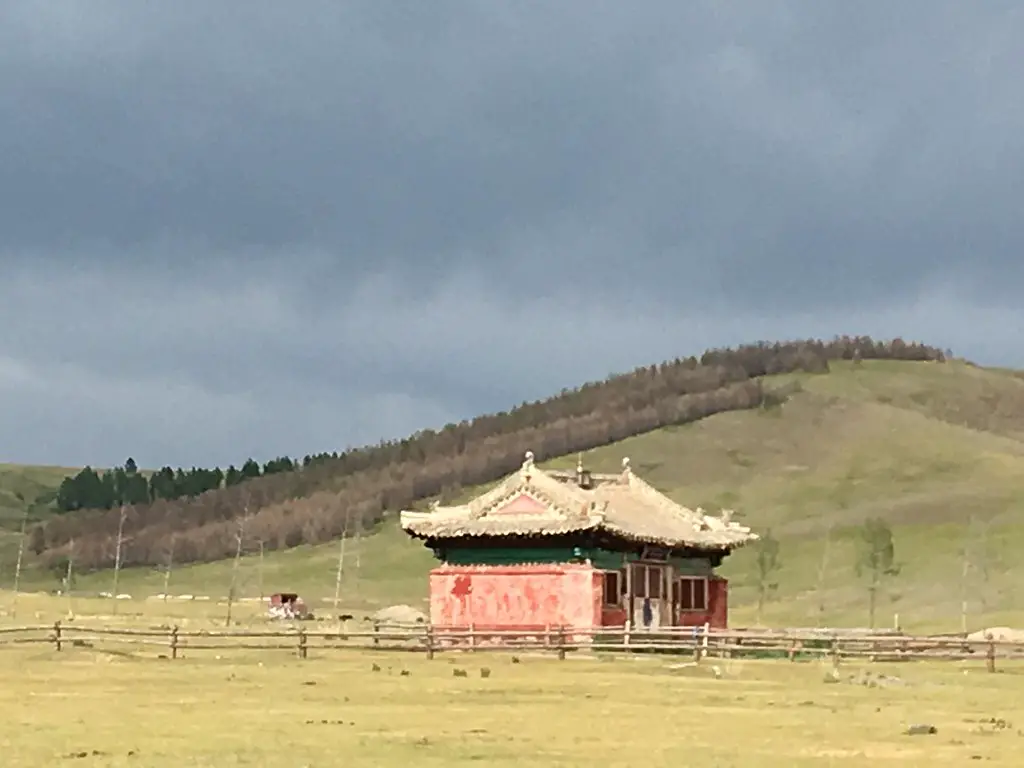
Amarbayasgalant Monastery is a stunning Buddhist monastery located in the northern part of Mongolia. This historic complex is one of the few monasteries that survived the communist purges of the 1930s.
What to see or do: Visitors can admire the exquisite architecture of the monastery, which is a blend of Chinese and Mongolian styles. The monastery complex has a multitude of temples and shrines, adorned with beautiful Buddhist art and statues.
Don’t miss: Don’t miss the chance to witness the daily rituals performed by the monks that reside in the monastery. Visitors can also attend the traditional Buddhist ceremonies that take place throughout the day.
Insider travel tips: – Keep in mind that the monastery is still very much an active religious center, so it’s important to be respectful of the traditions and culture of the monks and other visitors.
7. Bayanzag Flaming Cliffs
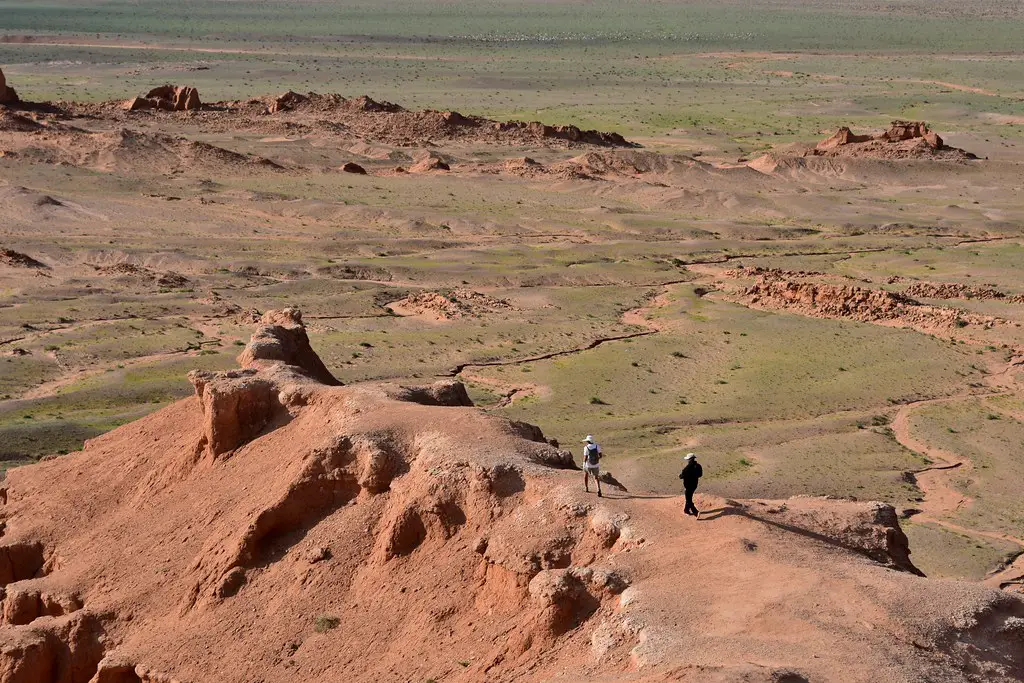
A famous geological landmark in the Gobi Desert, known for its red sandstone cliffs and rich dinosaur fossil discoveries.
What to see or do: Take a stroll around the cliffs, admire the stunning sunset, and learn about the fascinating fossil history of the area.
Don’t miss: The chance to spot one of the many eagles that soar above the cliffs, and the opportunity to see a spectacular sunset over the desert landscape.
Insider travel tips: Wear comfortable shoes as the terrain can be uneven, and bring plenty of water and sunscreen as the sun can be intense.
Additionally, it can get chilly in the evening, so bring a jacket or coat.
For the best experience, consider hiring a local guide to help navigate the area and learn about the unique history of the region.
8. Khustain Nuruu National Park
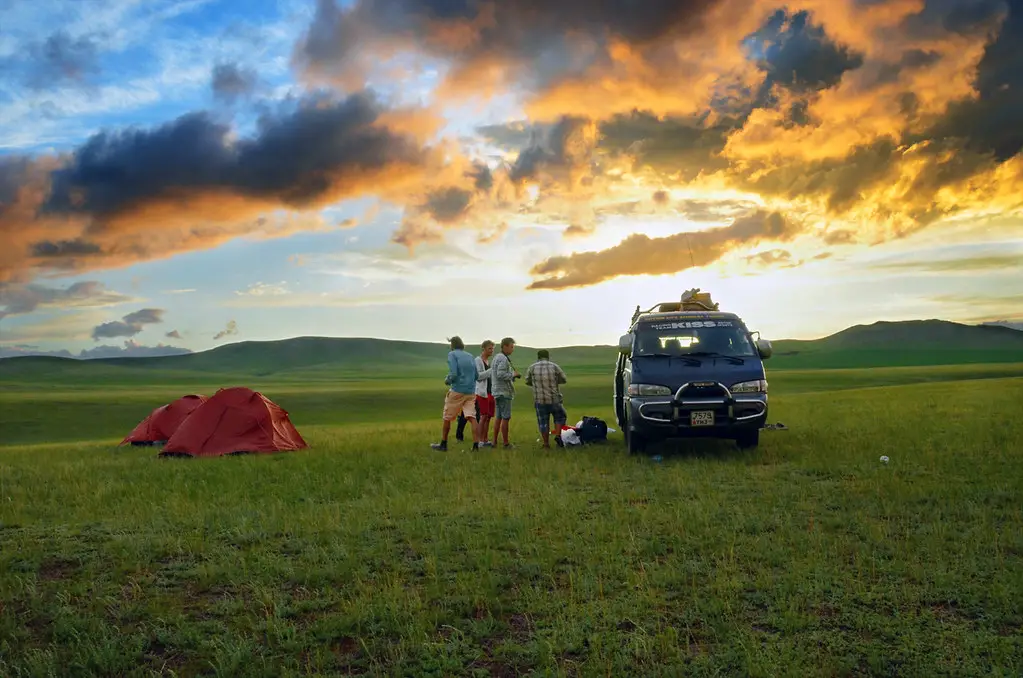
Khustain Nuruu National Park is a protected area in Mongolia, known for its successful reintroduction of the wild horse species, Przewalski’s horse, also called takhi in the local language.
What to see or do: Witnessing the takhi in their natural habitat is a must-see experience. The park offers opportunities for horseback riding, trekking, and hiking through pristine grassy steppe landscapes.
There are also picnic areas to relax and enjoy the natural surroundings.
Don’t miss: One of the most popular activities in the park is watching the daily feeding of the takhi by the park rangers.
It’s an excellent way to get up close to the animals and take some stunning photographs of them.
Insider travel tips: To see the takhi in their most active state, plan your visit in the early morning or late afternoon. If you have time, consider staying overnight in nearby ger camps to maximize your time in the park.
Be sure to bring warm clothing, as the weather can be quite chilly in the evenings and mornings. Additionally, it’s essential to respect the park rules, as takhi conservation is a top priority.
9. Karakorum/Erdene Zuu
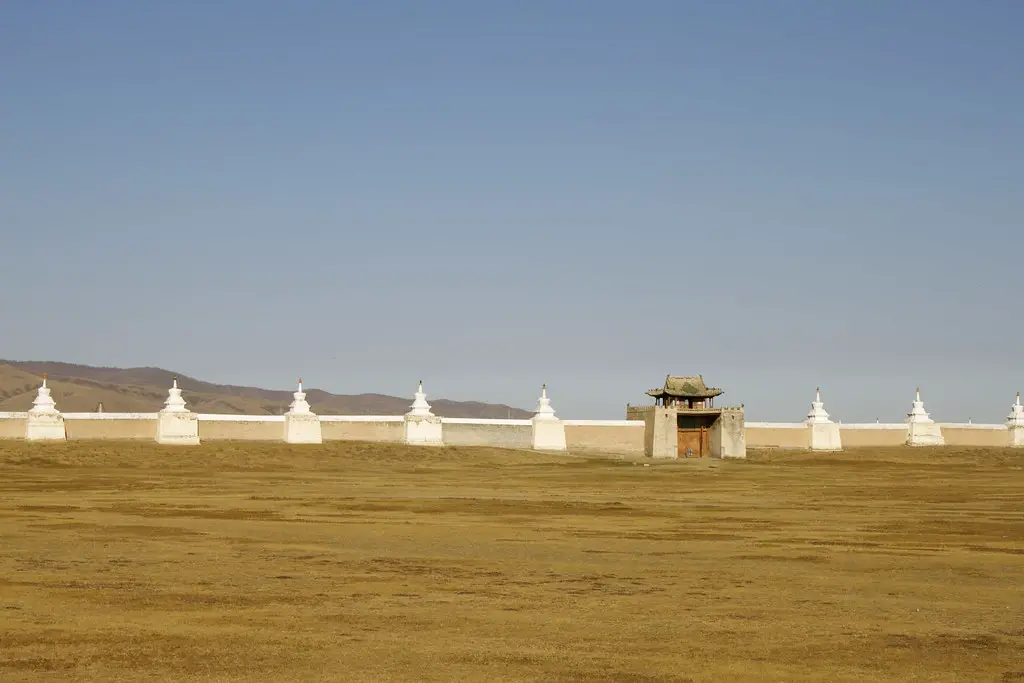
The ancient Mongolian capital and the ruins of Karakorum, with the nearby Erdene Zuu Monastery.
What to see or do: Explore the ancient ruins of Karakorum and get a glimpse of the city’s glory days. Visit the Erdene Zuu Monastery, the oldest surviving Buddhist monastery in Mongolia, and admire its beautiful architecture and religious artifacts.
Don’t miss: The 108 stupas that surround the monastery, and the impressive collection of thangkas (Buddhist paintings on silk) that adorn the walls of the main temple.
Insider travel tips: Bring sunscreen and a hat, as there is little shade in the open areas surrounding the monuments. Don’t forget your camera, as the scenery and architecture make for great photo opportunities.
If you have time, try to attend a Buddhist ceremony at the monastery, to really experience the spiritual atmosphere of the place.
10. Ongi Monastery
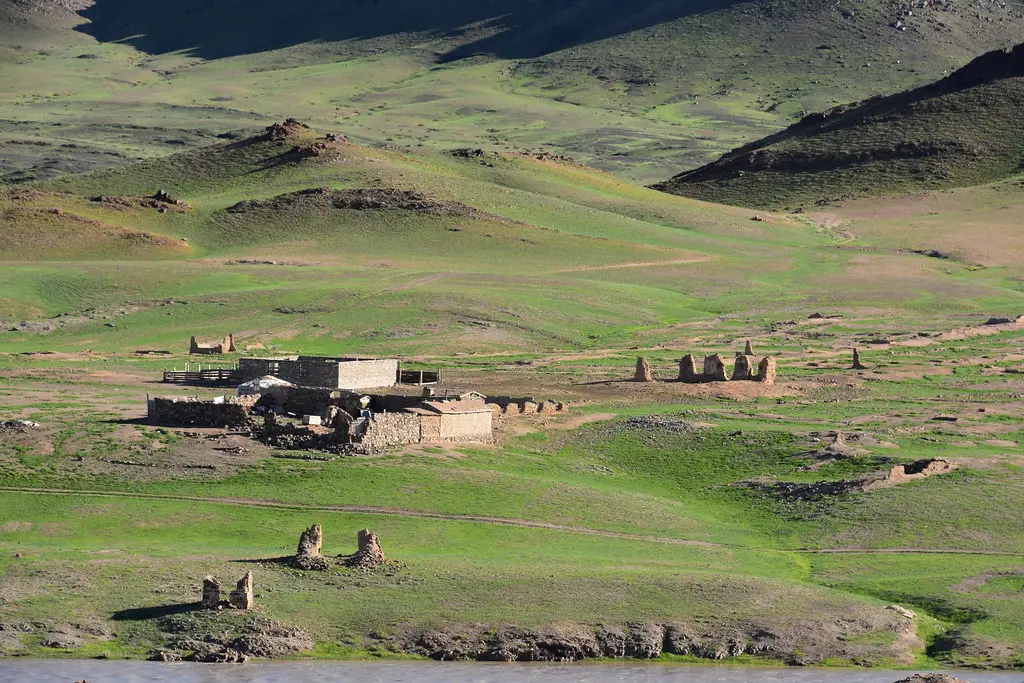
Ongi Monastery is a ruined Buddhist monastery located in the Gobi desert of Mongolia.
What to see or do: Explore the remains of the ancient monastery, including the main temple, stupas, and the monks’ quarters. Enjoy the stunning views of the surrounding desert landscape.
Don’t miss: The Ongi River that flows nearby, which is a great spot for fishing and hiking. Also, don’t miss the opportunity to witness traditional Mongolian throat singing by local musicians.
Insider travel tips: It’s best to visit in the early morning or late afternoon when the lighting is ideal for photography. Bring plenty of water and sunscreen, as the desert heat can be intense.
Consider staying at a nearby ger camp for a unique and immersive experience.
11. Khar Us Nuur National Park
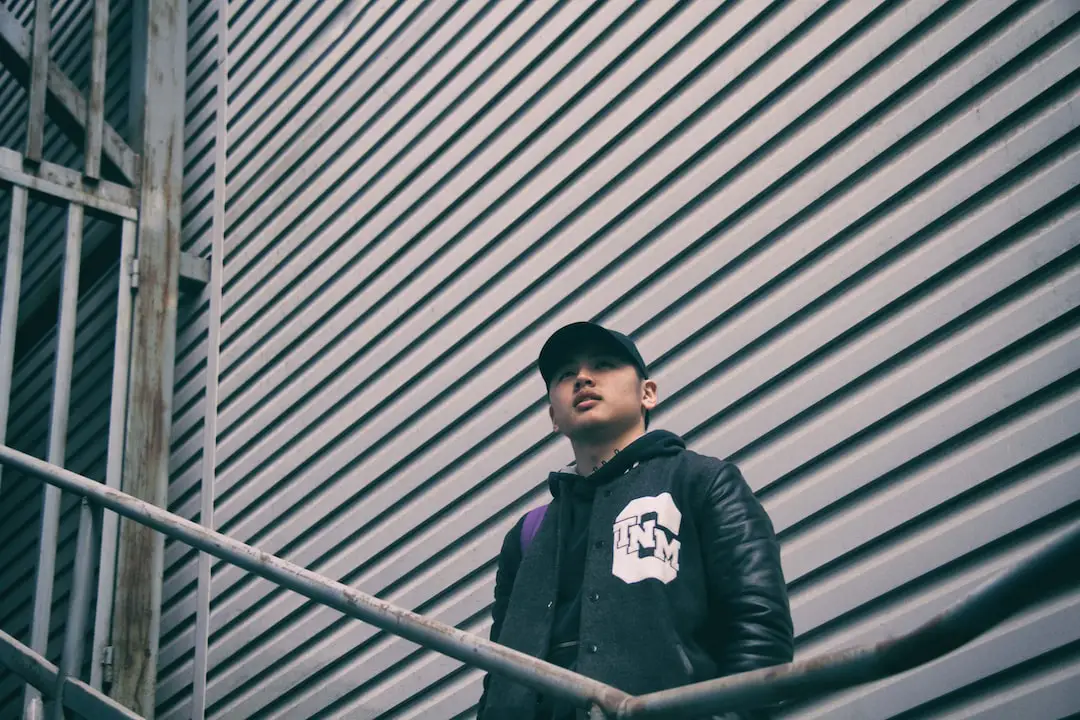
Khar Us Nuur National Park is a protected area located in western Mongolia, covering an area of 8500 square kilometers.
It was established to preserve the unique landscape and biodiversity of the area, which includes forests, lakes, rivers, and sand dunes.
What to see or do: Visitors can enjoy a variety of outdoor activities in Khar Us Nuur National Park, including hiking, bird watching, fishing, and horseback riding.
The park is also home to several rare and endangered species, such as the snow leopard, Siberian ibex, and argali sheep, which can be spotted on guided wildlife tours.
Don’t miss: A visit to Khar Us Nuur Lake, one of the largest freshwater lakes in Mongolia, is a must-see when visiting the park.
This stunning lake is surrounded by sand dunes and mountains, making it a perfect spot for photography and relaxation.
Insider travel tips: – Pack warm clothing, as temperatures in the park can drop significantly at night.
12. Khorgo-Terkhiin Tsagaan Nuur National Park

Khorgo-Terkhiin Tsagaan Nuur National Park is a protected area located in central Mongolia, covering an area of 1,470 sq. km.
It was established in 1994 to protect the ecosystem of the extinct Khorgo volcano and the nearby Terkhiin Tsagaan Nuur (White Lake).
What to see or do: Visitors can hike to the Khorgo volcano and enjoy the stunning views from the top.
There are also numerous hiking trails around Terkhiin Tsagaan Nuur that offer breathtaking panoramic views of the lake and the surrounding landscapes.
Boat tours are available to explore the lake and its nearby hot springs. Wildlife enthusiasts can also spot various species such as the Siberian ibex, argali sheep, elk, and red deer.
Don’t miss: Don’t miss visiting the Khorgo volcano, which stands at an altitude of 2,210 meters, and explore its massive crater. The nearby Terkhiin Tsagaan Nuur is also a must-visit spot for its clear blue water and stunning mountain views.
Insider travel tips: The best time to visit Khorgo-Terkhiin Tsagaan Nuur National Park is from June to September as the weather is pleasant and the park is accessible.
13. Gobi Gurvansaikhan National Park
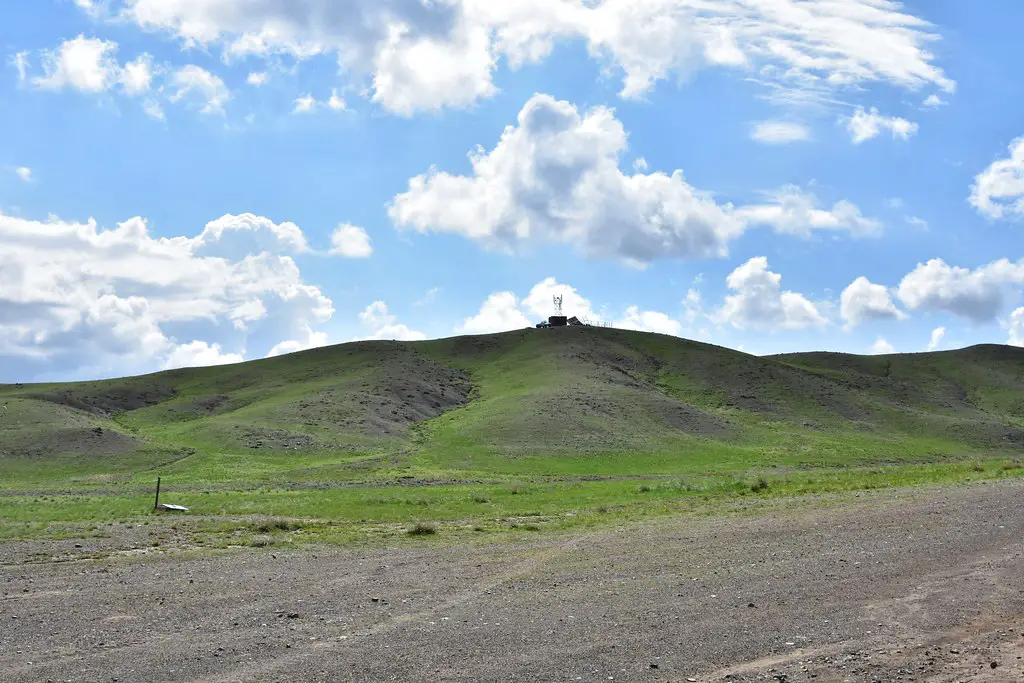
Gobi Gurvansaikhan National Park is a protected area located in the southern part of Mongolia. It covers over 3,900 square miles of diverse landscapes, including sand dunes, mountains, canyons, and steppes.
What to see or do: Explore the stunning sand dunes of Khongor and Moltsog Els, which extend for miles and are some of the tallest in the world.
Hike through the Yol Valley, with its unique ice formations that remain all year round. Visit the ancient rocky formations at Bayanzag, or “Flaming Cliffs,” where dinosaurs once roamed.
Don’t miss: Climb to the top of the iconic “Singing Dunes” and listen to the unique sound of the sand as it shifts in the wind.
Take a camel trek across the desert and experience Mongolia’s nomadic culture firsthand. Keep an eye out for wildlife, including the elusive snow leopard, wild asses, and Gobi bears.
Insider travel tips: Visit in the shoulder seasons of spring and autumn for milder temperatures and fewer crowds. Prepare for extreme weather conditions, as temperatures can range from freezing to blistering hot in the park.
Bring plenty of water and supplies, as amenities are limited in this remote area.
14. Zanabazar Museum of Fine Arts

Zanabazar Museum of Fine Arts is a museum located in Ulaanbaatar, Mongolia, dedicated to the artwork and life of Gombodorj Zanabazar, a prominent 17th-century Mongolian artist.
What to see or do: The museum boasts an impressive collection of Zanabazar’s sculptures, paintings, and artifacts, which showcase his unique blend of Mongolian, Tibetan, and Chinese artistic styles.
Visitors can also explore a range of exhibits that cover the history and culture of Mongolia, including traditional costumes, jewelry, and household items.
Don’t miss: One of the highlights of the museum is Zanabazar’s 1635 “Green Tara” statue, a rare example of his early work that is considered one of Mongolia’s most important artistic treasures.
Insider travel tips: – The museum can be crowded, so consider visiting during the weekday mornings to avoid the crowds.
15. Choijin Lama Temple Museum
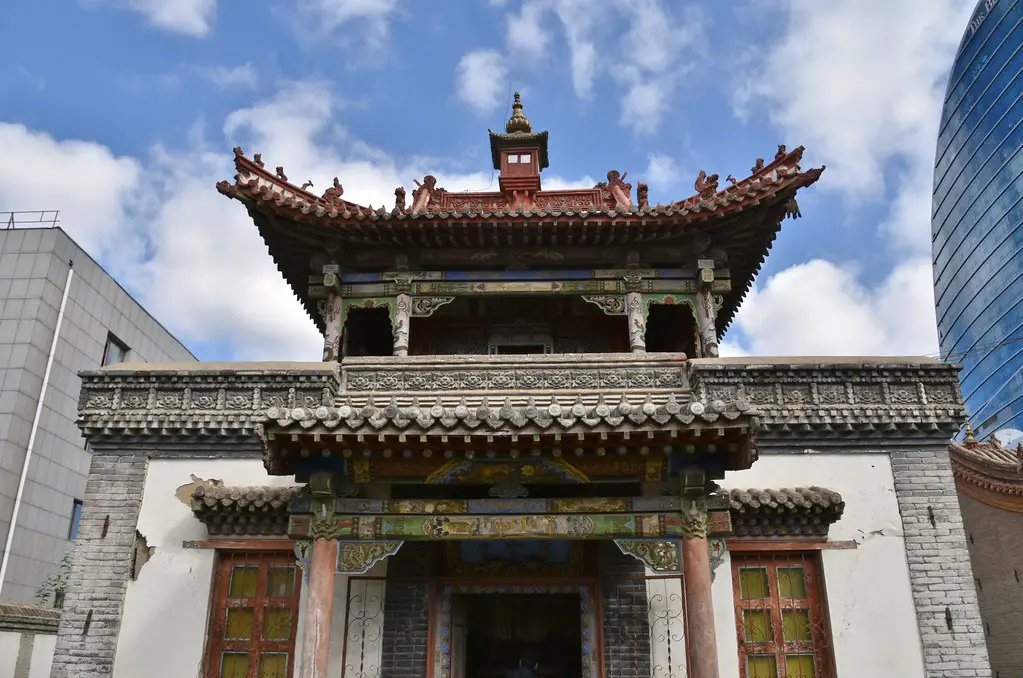
Choijin Lama Temple Museum is a Buddhist temple turned museum located in the heart of Ulaanbaatar, Mongolia.
What to see or do: Visitors can explore the beautifully preserved temple complex that now houses a selection of fascinating exhibits featuring traditional Mongolian and Tibetan art and artifacts.
The museum contains five temples, each of which holds intricate artwork, statues, and rare religious texts.
Don’t miss: The highlight of the museum is The Sacred Mandala exhibit located in the center of the main temple. This intricate artwork features thousands of unique and detailed paintings that depict Buddhist philosophy and beliefs.
Insider travel tips: The best time to visit Choijin Lama Temple Museum is in the morning when there are fewer crowds.
16. Khutag-Undur Petroglyphs
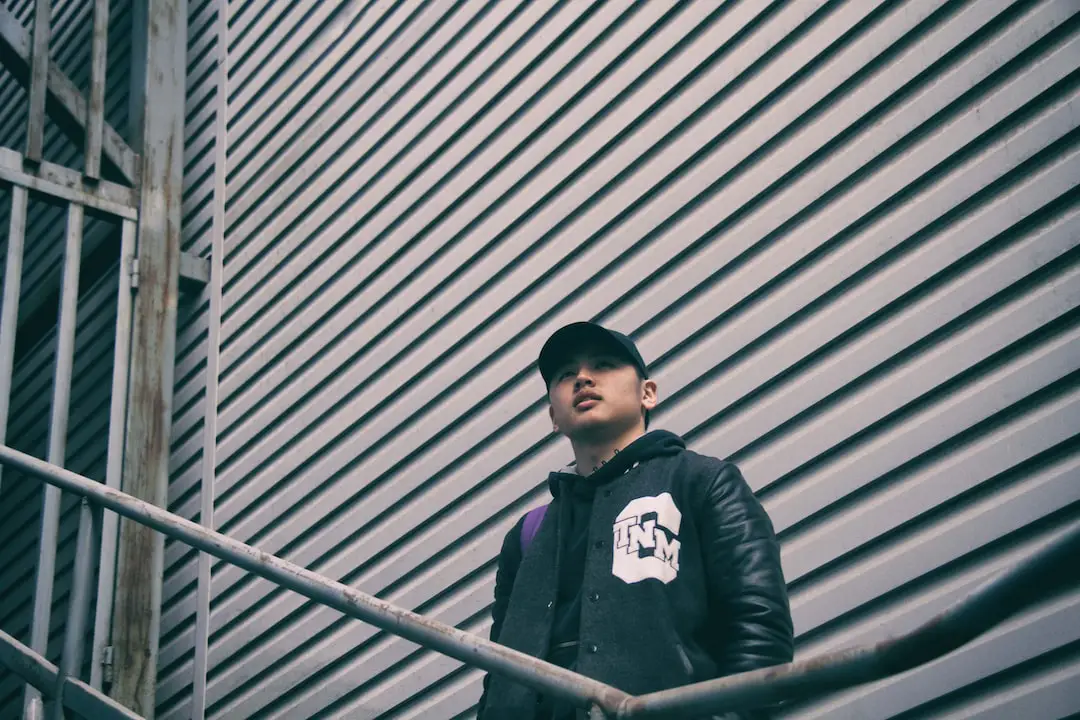
The Khutag-Undur Petroglyphs are a collection of ancient rock carvings located in Khövsgöl province, Mongolia.
What to see or do: Visitors can see more than 10,000 petroglyphs that depict a variety of images, including animals, humans, and even extraterrestrial beings.
The carvings are believed to date back to the Bronze Age, and some are thought to be up to 5,000 years old.
Don’t Miss: Don’t miss the opportunity to hike through the stunning natural landscape surrounding the petroglyphs. The area is home to picturesque mountains, forests, and rivers.
Insider travel tips: – The best time to visit the Khutag-Undur Petroglyphs is during the summer months when the weather is mild and the scenery is at its most beautiful.
17. Uushig Deer Stones
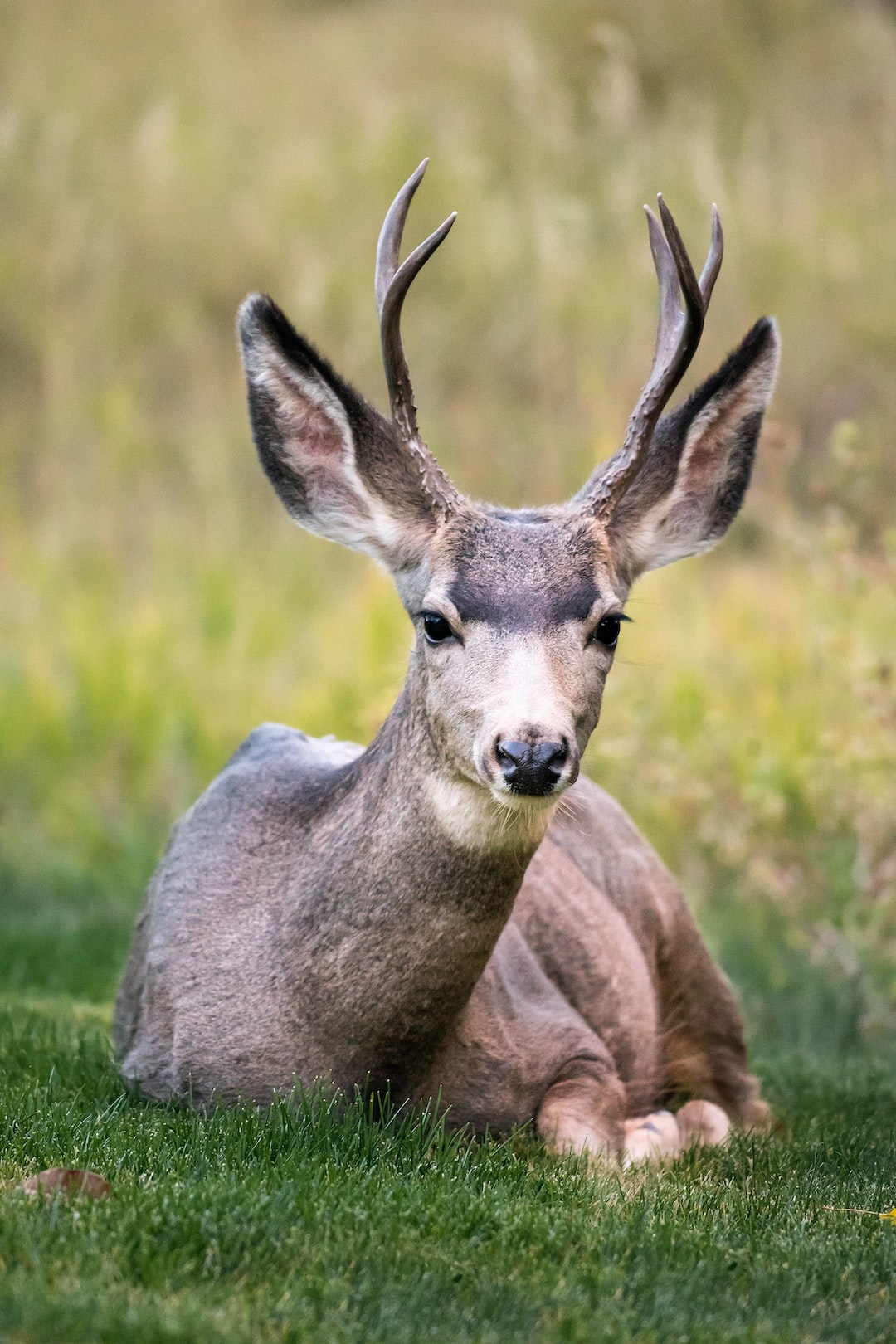
What to see or do:
Don’t miss:
Insider travel tips: Visit during the annual spring festival to see traditional rituals and performances in addition to the stones. Hire a local guide to learn more about the history and significance of the stones.
18. Kharkhorum Museum
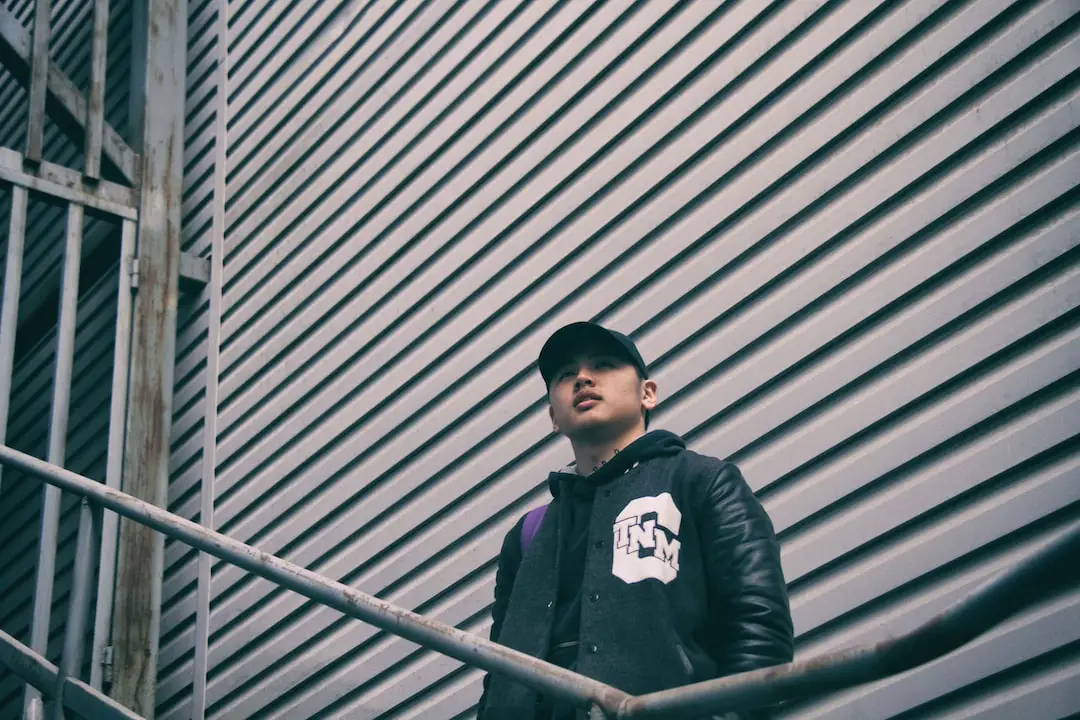
The Kharkhorum Museum is a historical museum located in the town of Kharkhorum in Mongolia. The museum showcases the rich cultural and religious heritage of Mongolia.
What to see or do: Visitors can explore various exhibits that display traditional clothing, crafts, weapons, and artifacts from the Mongolian Empire. The museum also features a collection of Buddhist artworks and statues.
Don’t miss: The highlight of the museum is the replica of the Great Mongol Empire’s map, which covers the walls of the exhibition hall.
There are also exhibits dedicated to the life and reign of the famous Mongolian Emperor, Chinggis Khaan.
Insider travel tips: Visitors should hire a knowledgeable guide who can provide insights into the historical significance of the artifacts on display. The museum is located close to the ancient city ruins of Kharkhorum, which visitors can explore after visiting the museum.
19. The Chinggis Khaan Golf Club
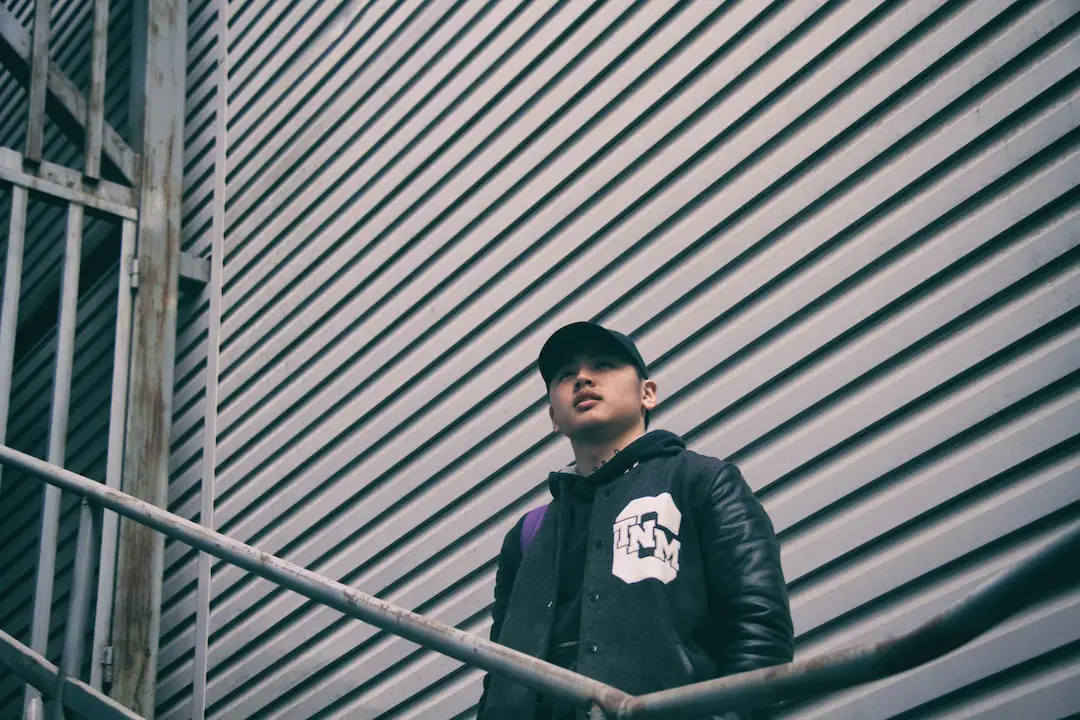
The Chinggis Khaan Golf Club is a premier 18-hole golf course located in the heart of Mongolia.
What to see or do: Apart from playing golf in the beautiful surroundings of Mongolia, visitors can also enjoy a luxurious clubhouse with restaurants, a pro-shop, a spa, and a gym.
The golf course also hosts regular tournaments and events.
Don’t miss: Don’t miss the opportunity to take in the stunning panoramic views of the surrounding mountains while playing golf.
Also, make sure to check out the impressive 9th hole, which is a par-5 that requires a 176-yard shot over a canyon to reach the green.
Insider travel tips: If possible, try to visit the Chinggis Khaan Golf Club during the early morning to see the sunrise over the mountains.
It is also recommended that visitors make reservations in advance to ensure a spot on the course. Additionally, visitors should be prepared for the weather, as Mongolia’s climate can be unpredictable, even during the summer months.
20. Gun-Galuut Nature Reserve
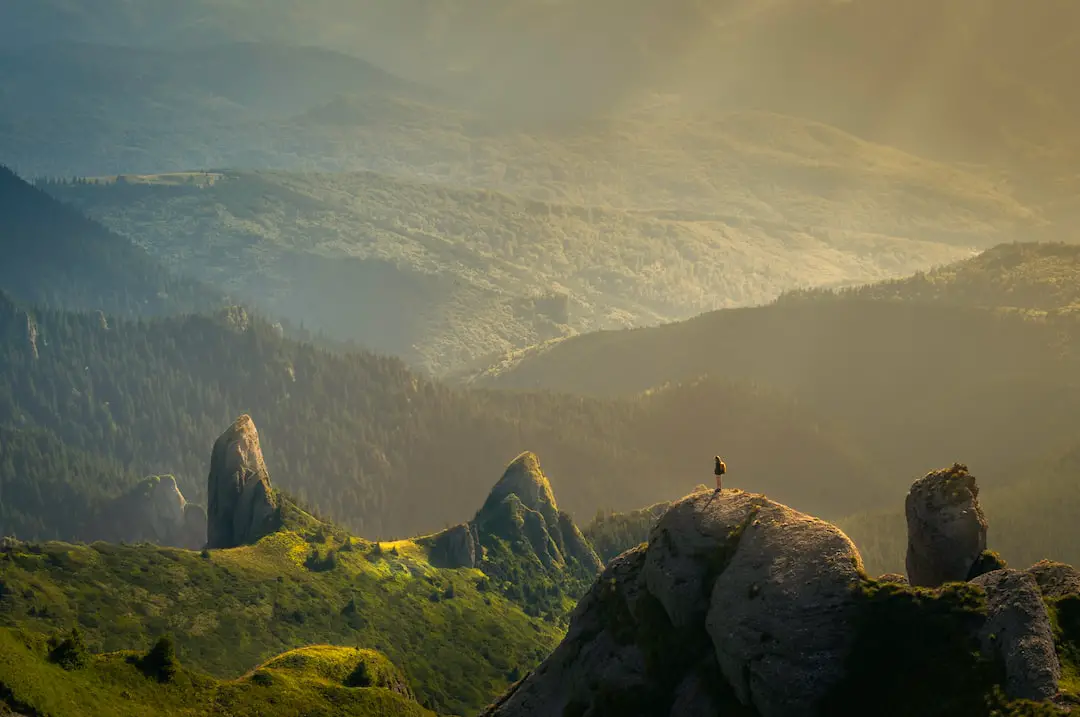
Gun-Galuut Nature Reserve is a protected area located in the Tuv Province of Mongolia, covering about 200,000 hectares of broad valleys, wetlands, and mountains.
What to see or do: Visitors can enjoy a plethora of outdoor and wildlife activities, including hiking, bird-watching, horseback riding, and camping. One can also take a boat tour of the beautiful Kherlen River.
Don’t miss: The “Last Great Wilderness” area which is a 30,000-hectare wilderness zone that is home to endangered species like the Argali Sheep and Siberian White Crane.
Insider travel tips: Visitors can learn about traditional Mongolian nomadic life and culture by staying in a ger, a traditional Mongolian tent or yurt.
Also, don’t miss experiencing the hot springs near the Kherlen River while soaking in the panoramic view of the Gun-Galuut Nature Reserve.
21. Darkhan City
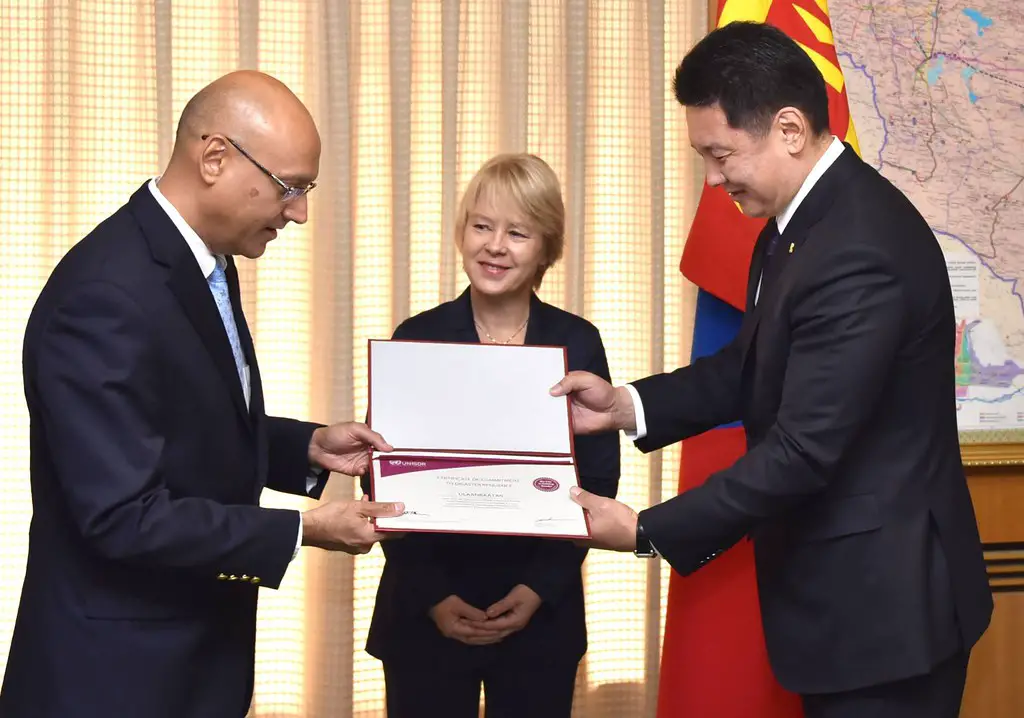
Darkhan City is an industrial city in northern Mongolia, located about 200 kilometers away from the capital, Ulaanbaatar.
What to see or do: – Visit the Darkhan-Uul Museum to learn about the city’s history and culture, including exhibitions on Mongolian traditional clothing and musical instruments.
Don’t miss: – The annual Naadam Festival in July, a traditional Mongolian festival featuring horse racing, wrestling, and archery competitions.
Insider travel tips: – Plan your visit during the summer months, as temperatures can drop to below freezing in the winter.
22. Tsagaan Suvarga Cliff
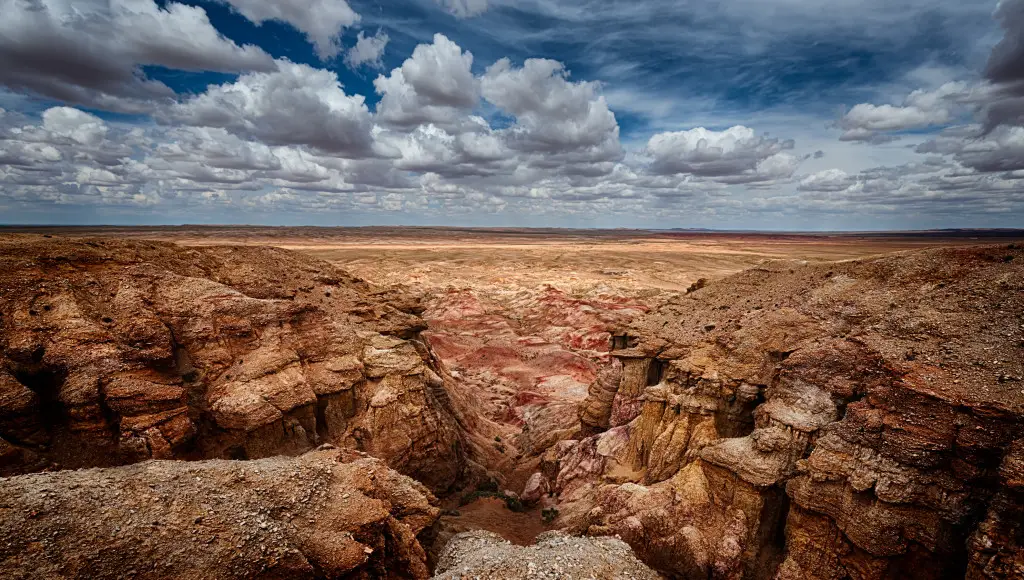
A stunning cliff formation located in Mongolia’s South Gobi province.
What to see or do: Admire the unique towering white and orange limestone formations that have been eroded by wind and water over millions of years.
Take in the breathtaking panoramic views of the surrounding desert landscape.
Don’t miss: The opportunity to witness a mesmerizing sunset from the top of the cliff. The changing colors of the rock formations as the sun goes down make for a truly unforgettable experience.
Insider travel tips: – The best time to visit Tsagaan Suvarga Cliff is during the spring or fall when temperatures are more moderate.
23. Aglag Buteel Monastery
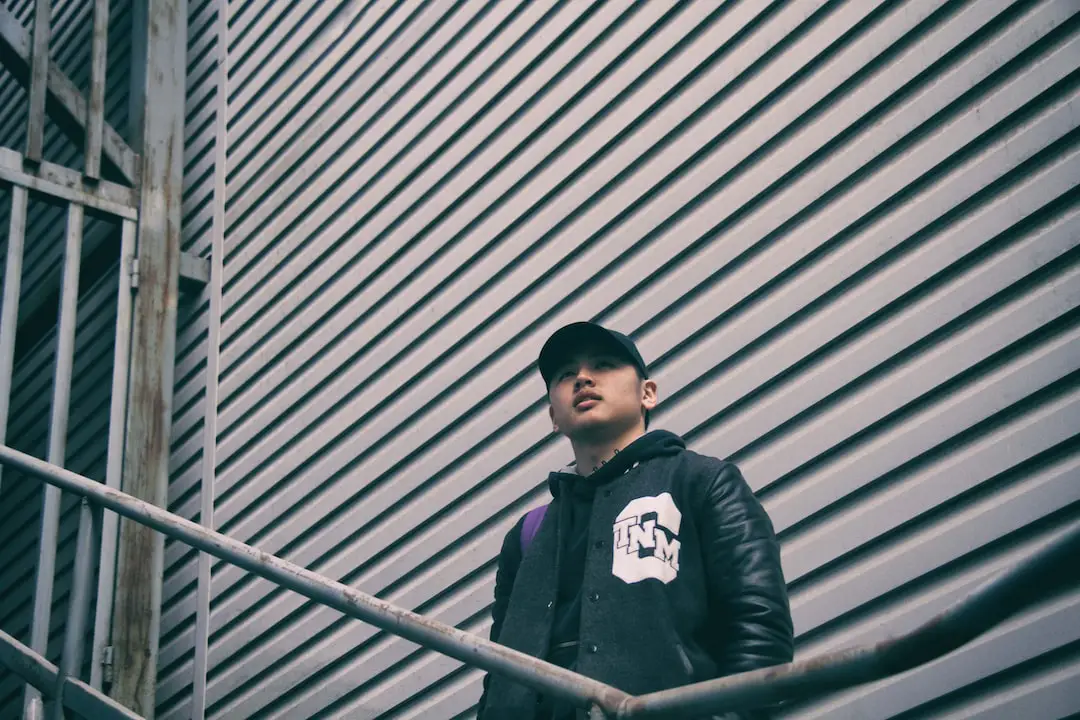
Aglag Buteel Monastery is a Buddhist monastery located in the beautiful Gobi Desert of Mongolia.
What to see or do: Visitors can explore the stunning desert landscape and take in the serene surroundings of the monastery.
You can also observe the daily routine of the monks, witness traditional Buddhist ceremonies, and participate in meditation sessions, offerings and chanting.
Don’t miss: Don’t miss the chance to experience the unique blend of Mongolian and Tibetan Buddhism at Aglag Buteel Monastery, from the colorful prayer flags and stunning Buddha statues to the intricate murals and architecture of the temple.
Insider travel tips: It’s a good idea to bring some warm clothes, even in the summer, as the desert nights can be quite chilly.
Also, try to bring a small offering such as food, water, candles or incense to leave as a gift to the monks.
Remember to always show respect and dress modestly when entering the monastery.
24. Singing Sand Dunes
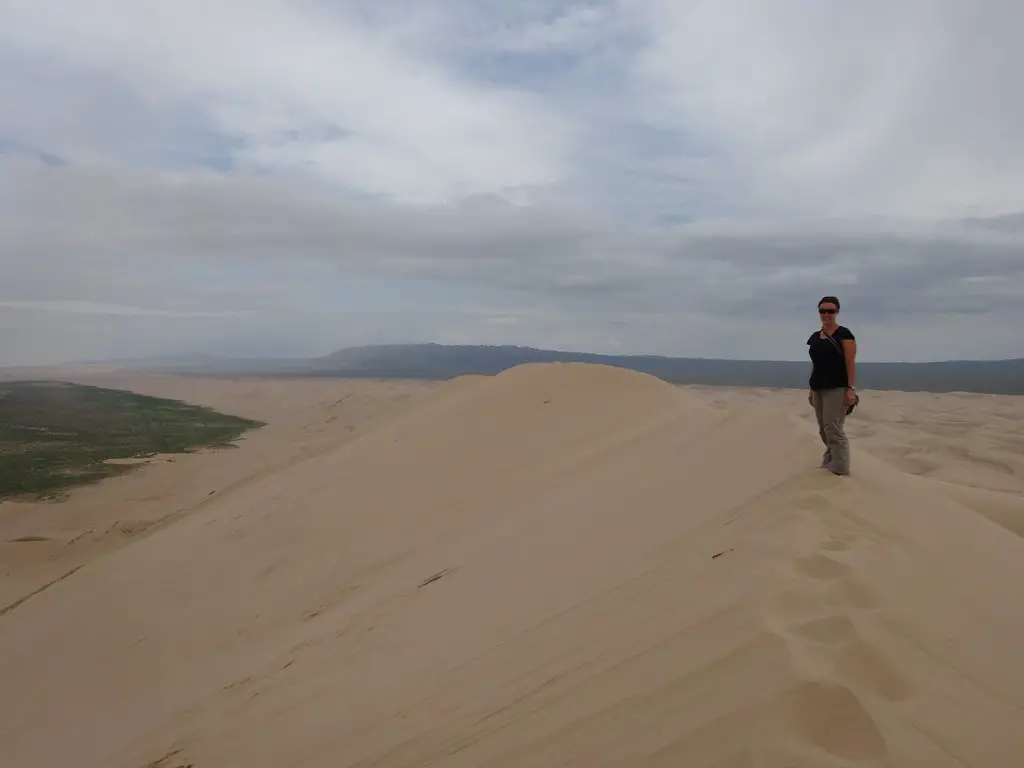
A natural phenomenon where sand dunes emit a distinct sound when moved or walked upon.
What to see or do: Experience the unique sound of the dunes by walking or running down them. You can also enjoy sandboarding, camel riding, or watching a beautiful sunset from the top of the dunes.
Don’t miss: Camping overnight in the dunes to enjoy the serene and peaceful surroundings under a star-studded desert sky.
Insider travel tips: It’s best to visit during the early morning or late evening when the temperature is cooler and the sand is not as hot.
Wear appropriate shoes and clothing, and bring plenty of water and sunscreen. Be respectful of the environment and avoid littering.
25. Khamriin Monastery
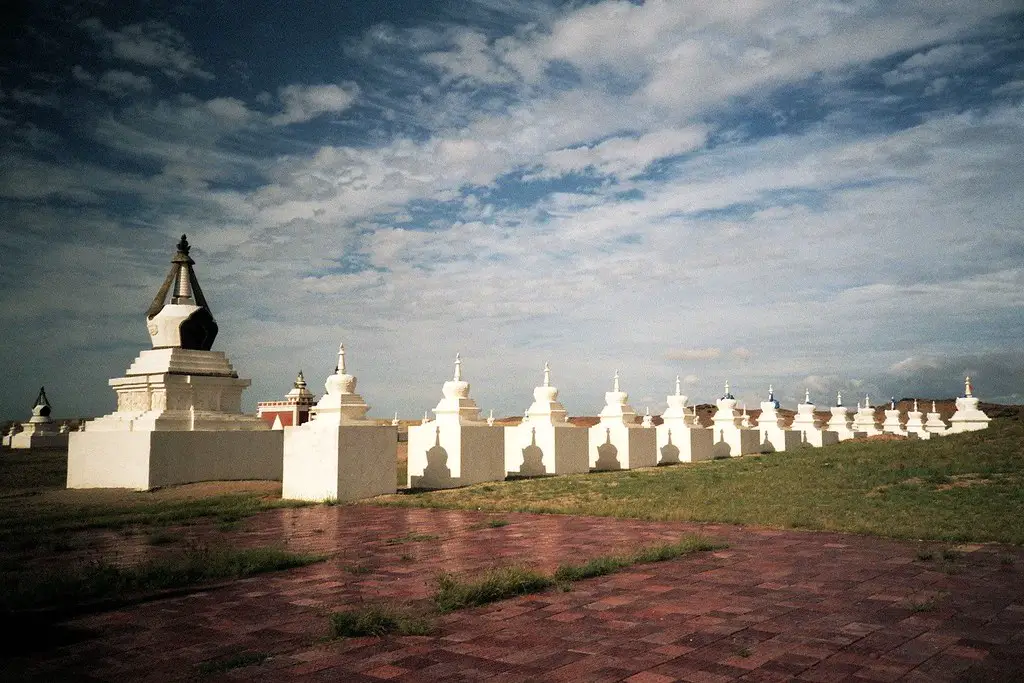
Khamriin Monastery, also known as Khamar Monastery, is a Buddhist monastery located in the foothills of the Khangai Mountains in central Mongolia.
What to see or do: Visitors can explore the various temples and structures within the monastery complex, including the main prayer hall and the temple of the 108 Stupas.
With its picturesque location, Khamriin Monastery is also a popular spot for hiking and enjoying the scenic views of the surrounding landscape.
Don’t miss: Don’t miss the annual Cham Dance Festival, held in late summer or early fall.
This festival features traditional dance and music performances, as well as a lively market where visitors can purchase handmade crafts and souvenirs.
Insider travel tips: Be sure to dress appropriately when visiting the monastery, as it is a place of worship.
Women should cover their heads and wear long skirts or pants, while men should wear long pants and a shirt with sleeves.
Additionally, visitors should be respectful and refrain from taking photos or touching religious artifacts without permission.
26. Deluun Boldog
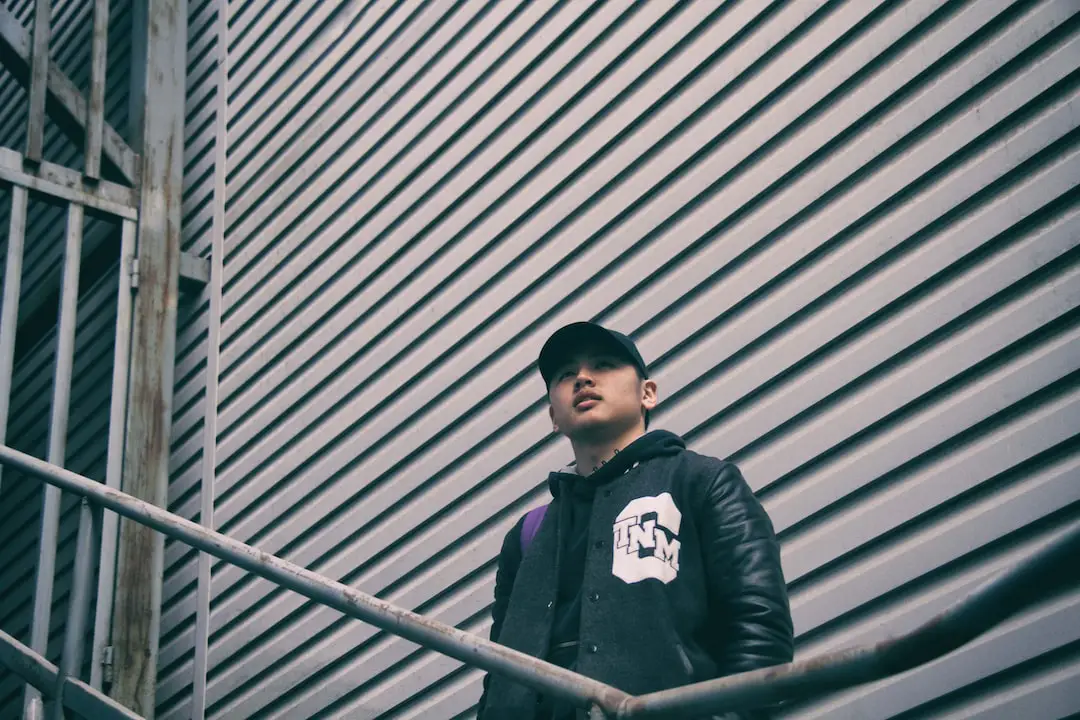
Deluun Boldog is a historical site in Mongolia, known for being the rumored birthplace of Genghis Khan.
What to see or do: Visitors can explore the picturesque hills and stands of trees surrounding the site, as well as a small museum dedicated to the life and legacy of Genghis Khan.
Don’t miss: The main attraction is the massive statue of Genghis Khan riding a horse that was erected at the site in 2008.
It stands at 40 meters tall and is truly a sight to behold.
Insider travel tips: If you’re interested in learning more about the history of Genghis Khan and the Mongol Empire, it’s worth hiring a local guide.
They can provide valuable insights and context that you might not get from just wandering around on your own. It’s also a good idea to bring sturdy shoes, as the terrain can be a bit rugged in places.
27. Khorgo Volcano
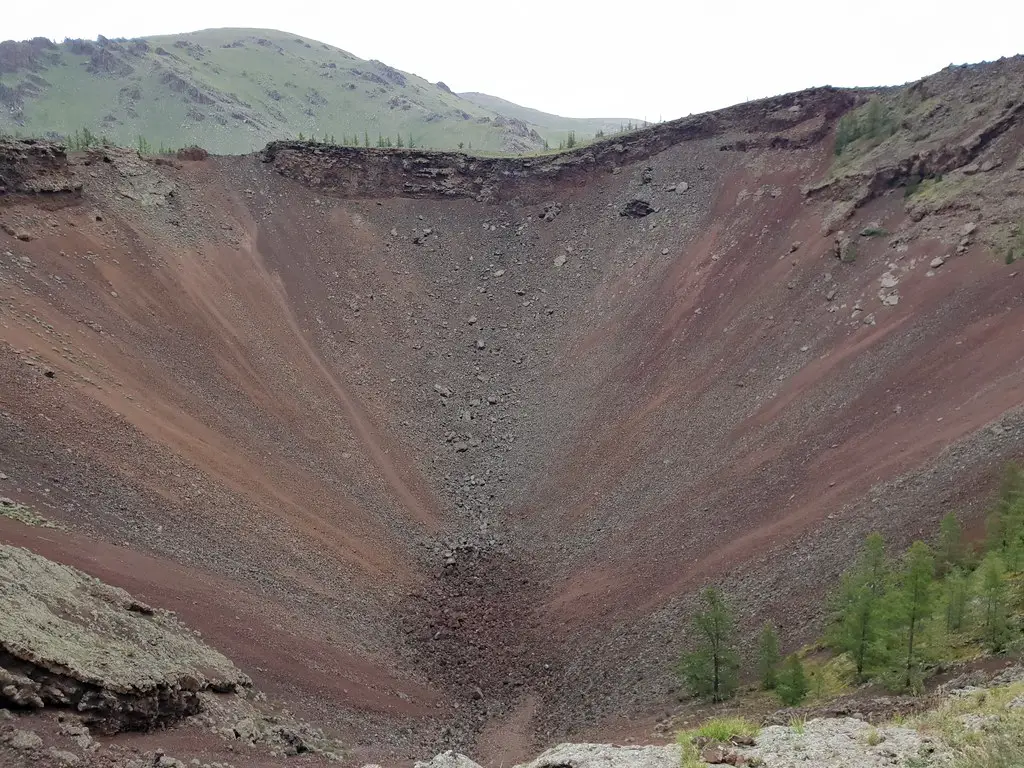
Khorgo Volcano is an extinct volcano located in Terkhiin Tsagaan Lake National Park in Central Mongolia.
What to see or do: Visitors can hike to the top of the volcano and enjoy stunning panoramic views of the surrounding landscapes. The national park also offers opportunities for bird watching and other outdoor activities such as horseback riding and camping.
Don’t miss: Don’t miss the chance to visit Terkhiin Tsagaan Lake, a beautiful freshwater lake located nearby. The lake is a perfect spot for fishing and boating, and it’s surrounded by lush green hills and steep cliffs.
Insider travel tips: – The best time to visit Khorgo Volcano is during the summer months (June-August) when the weather is warm and the hiking trails are accessible.
28. Kharkhorin Rocks
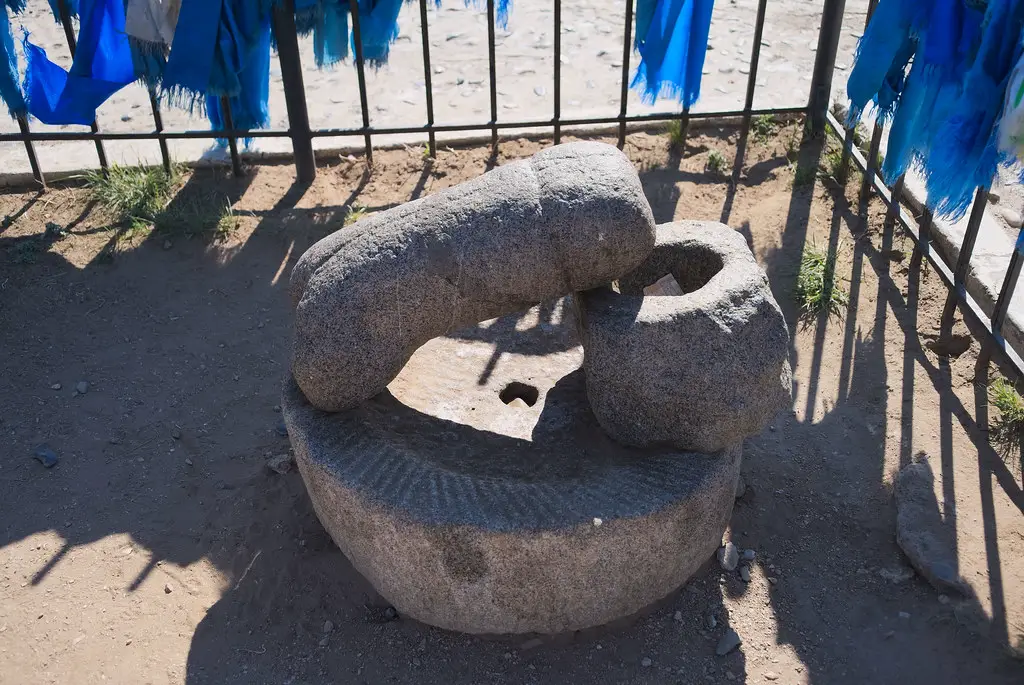
A sacred site and natural wonder located in the Kharkhorin valley of Mongolia.
What to see or do: Take a stroll through the area and take in the colorful and unique rock formations amidst the beautiful landscape.
Don’t miss: The gorgeous sunset over the rocks, which creates a breathtaking and dramatic atmosphere.
Insider travel tips: Don’t forget to bring your camera to capture the stunning scenery.
It’s also recommended to visit in the early morning or late afternoon to avoid the crowds and heat of the day.
Be sure to wear comfortable and sturdy shoes, as some of the trails can be steep and rocky.
29. Khongor Sand Dunes
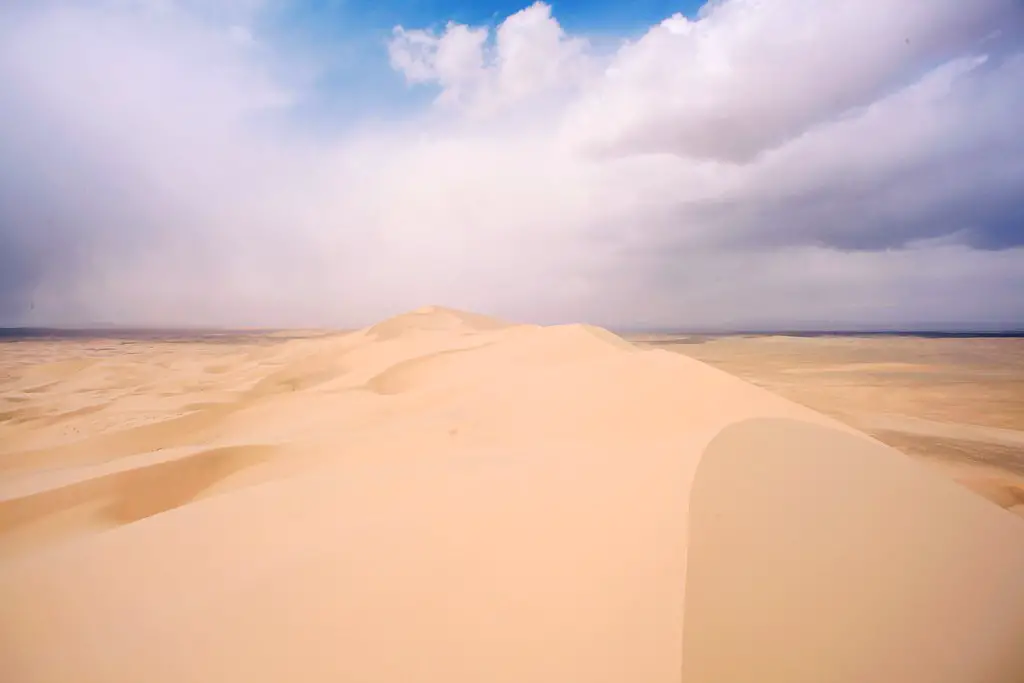
The Khongor Sand Dunes, also known as the “Singing Dunes,” are a stunning natural wonder in the Gobi Desert of Mongolia.
What to see or do: Visitors can hike to the top of the dunes for breathtaking panoramic views of the desert landscape. Sandboarding and camel rides are also popular activities to experience the dunes up close.
Don’t miss: The sound of the sand dunes “singing” is a unique experience not to be missed.
Make sure to listen for the sound of sand sliding down the dunes, which creates a humming noise that echoes through the desert.
Insider travel tips: Wear comfortable shoes for hiking up the sandy dunes, and bring plenty of water and sunscreen as the sun can be intense in the desert.
It’s also recommended to visit early in the morning or late in the afternoon to avoid the heat of the day.
💪 Support independent web, support us:
